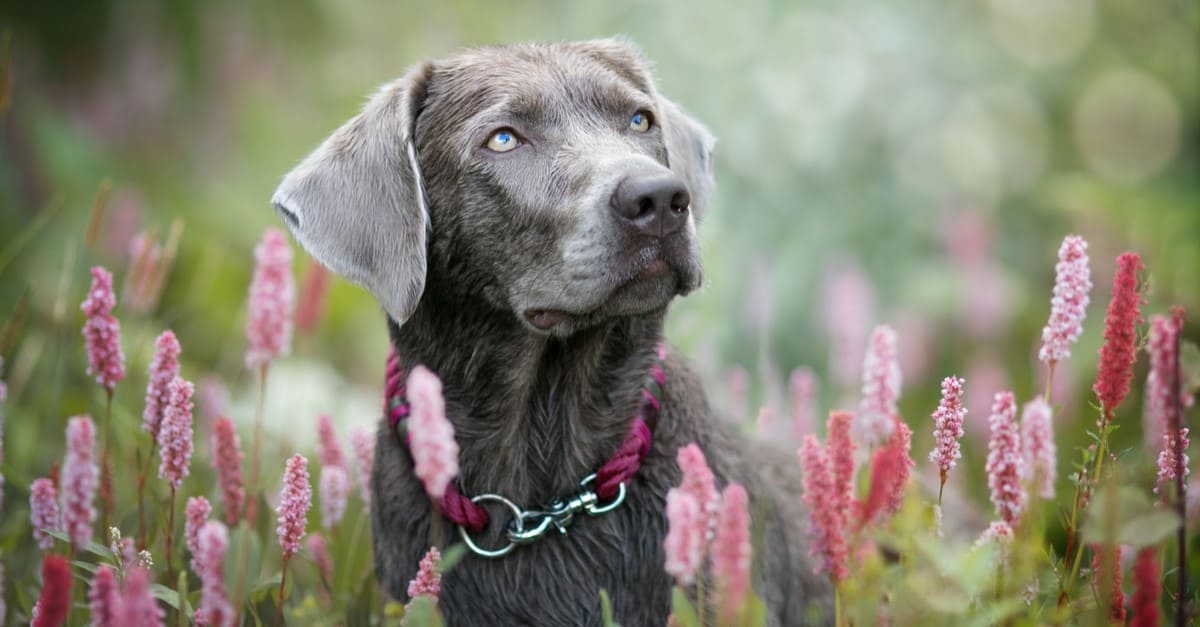Brian Griffin, a prominent character from the animated TV show Family Guy, is portrayed as a charming and intelligent canine companion. But what kind of dog is Brian Griffin from Family Guy?
In this article, we will explore the breed of dog that inspired Brian Griffin’s character. In addition, we will also go over other famous films and books starring that specific kind of dog and a complete overview of the breed itself.
What Kind of Dog Is Brian Griffin from Family Guy?
Brian Griffin, the beloved canine character from the animated TV show Family Guy, is portrayed as a Labrador Retriever. Created by Seth MacFarlane, Brian’s breed selection was a deliberate choice based on the breed’s characteristics and popularity. Labrador Retrievers are known for their intelligence, loyalty, and friendly nature, making them an ideal choice for this main character in the show.
Why the Labrador Retriever?
The Labrador Retriever is a well-known and widely recognized breed, originally hailing from Newfoundland, CA. It is one of the most popular dog breeds globally, valued for its versatility and amiable temperament. Labradors are often depicted as family-oriented dogs with a strong bond with their human companions, making them fitting for Brian Griffins’s character in Family Guy.
Labrador Retrievers are renowned for their intelligence and are considered one of the most trainable breeds. They consistently rank high in obedience and working intelligence tests. They are also incredibly charismatic. All of which align well with Brian’s character traits. Throughout the show, Brian is portrayed as highly articulate and intellectually advanced compared to other characters. These qualities align with the Labrador’s reputation for being quick learners and having a knack for problem-solving.
Additionally, the Labrador Retriever’s physical appearance may have influenced Brian’s breed choice. Labradors are medium to large-sized dogs with well-muscled bodies, sturdy build, and characteristic otter-like tails. Brian’s physical portrayal as a Labrador Retriever accurately captures these features, adding to his visual appeal and recognition among viewers.
Labradors are known for their friendly and outgoing nature, and Brian’s personality echoes these traits. Throughout the show, Brian is often seen as a caring and compassionate companion to the Griffin family, displaying loyalty and empathy. These qualities align with the breed’s reputation for being excellent family dogs, renowned for their patience and love for children.
The Labrador Retriever Is the Perfect Fit for Brian Griffin’s Character
Brian, the intellectual and anthropomorphic Labrador Retriever, is known for his wit, sarcasm, and humorous banter. His presence adds depth and comedy to the show, making him a fan favorite. Brian Griffin has become an iconic character in popular culture since the show’s inception in 1999. His portrayal as a Labrador Retriever has undoubtedly contributed to his popularity, as the breed is widely recognized and cherished by dog enthusiasts worldwide.
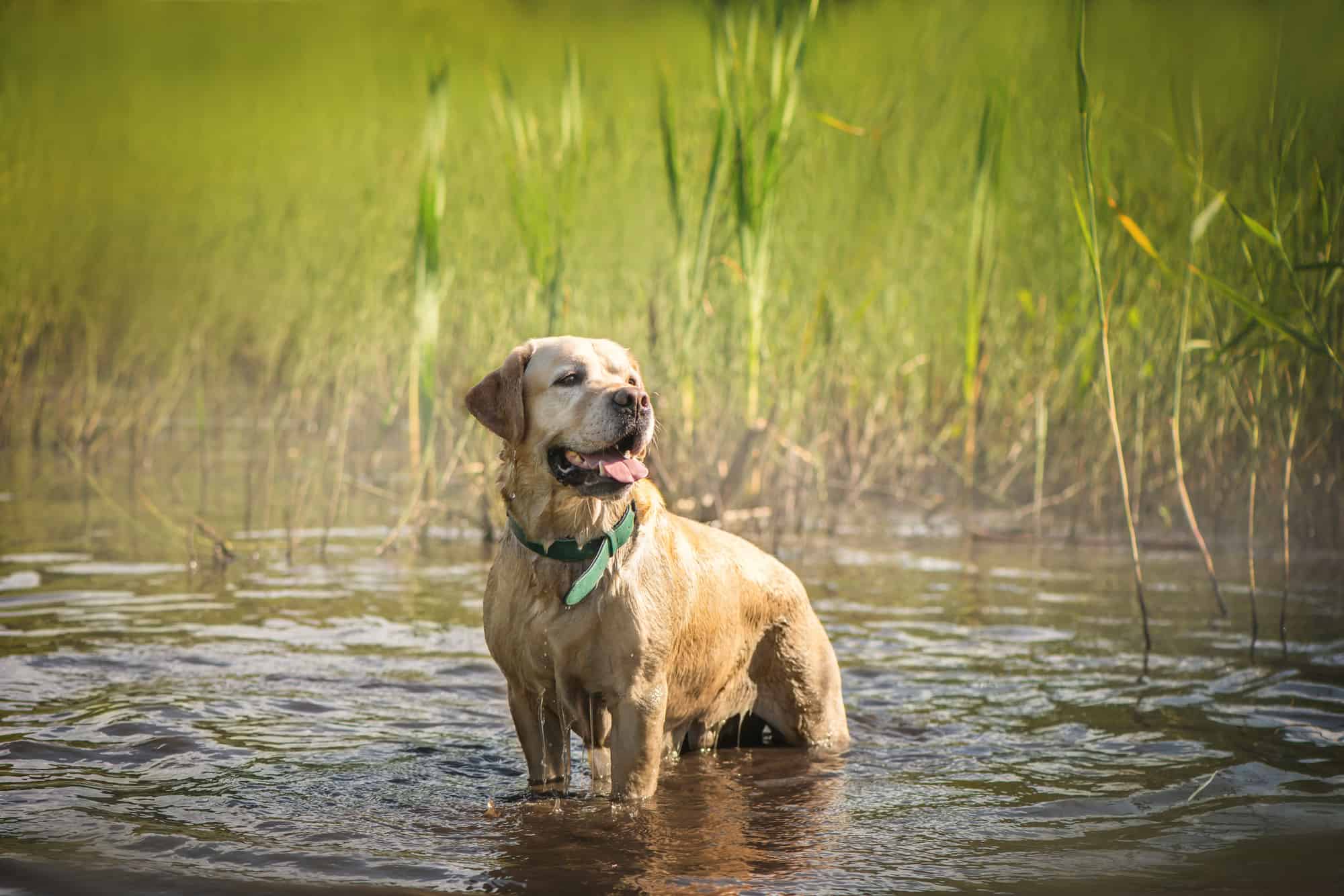
Labrador Retrievers are one of the most popular breeds of dogs in North America.
©iloliloli/Shutterstock.com
Labrador Retriever: Breed Overview
Now that we know the kind of dog Brian Griffin from Family Guy is, let’s explore an overview of the breed.
The Labrador Retriever, often referred to simply as the Labrador, is a versatile and popular dog breed known for its friendly nature, intelligence, and loyalty. This breed originated in Canada and has since gained global recognition as an exceptional family companion and working dog.
Origin
Originating in the 19th century, Labradors came from breeding efforts by fishermen and hunters in Newfoundland. They were originally known as St. John’s Water Dogs, named after the capital city of Newfoundland. They developed these dogs to assist fishermen in retrieving fish and to retrieve birds during hunting expeditions.
Labradors have a distinct ancestry, descending from a mix of St. John’s Water Dogs, Newfoundlands, and small water dogs brought to Newfoundland by European fishermen. The breed’s distinct characteristics and capabilities gradually became refined over time through selective breeding.
Characteristics
One of the most prominent features of Labradors is their physical appearance. They are medium to large-sized dogs with a muscular build and a sturdy frame. Labradors have a broad head, a pronounced muzzle, and kind, expressive eyes. Their ears are of medium size and hang close to their head. One of the most recognizable features of a Labrador is its tail, which is thick and otter-like, known for its enthusiastic wagging.
Labradors have a double coat that provides protection and insulation in various weather conditions. The outer coat is short, dense, and waterproof, while the undercoat is soft and keeps them warm. The breed comes in three primary colors, including black, yellow, and chocolate. The coat is easy to maintain, requiring regular brushing to keep it clean and minimize shedding.
Temperament
According to the American Kennel Club, Labradors are one of the friendliest and most outgoing dog breeds. They are affectionate and have a gentle nature, making them excellent family pets. Labradors are particularly good with children and tend to be patient and tolerant, making them ideal companions for families with young ones.
Intelligence is another key characteristic of Labradors. They are highly trainable and eager to please their owners, which makes them a popular choice for various roles, including service dogs, search and rescue dogs, and therapy dogs. Their intelligence and ability to learn quickly enable them to excel in obedience training and perform a wide range of tasks.
Labradors have a natural affinity for water, a trait inherited from their ancestors. They possess webbed paws, which aid in swimming, and a water-resistant coat that enables them to stay dry and warm in wet conditions. Their love for water makes them excellent retrievers, and they thoroughly enjoy activities such as swimming, retrieving toys, and participating in water sports.
The friendly and sociable nature of Labradors extends to their interactions with other animals. They generally get along well with other dogs and pets, making them adaptable in multi-pet households. Proper socialization from an early age is essential to ensure they develop good manners and positive behavior when interacting with other animals.
Labradors are energetic and require regular exercise to maintain their physical and mental well-being. Daily walks, playtime, and interactive activities such as fetch or agility training are crucial to keep them stimulated and prevent boredom. Without adequate exercise, Labradors may become restless and display destructive behavior.
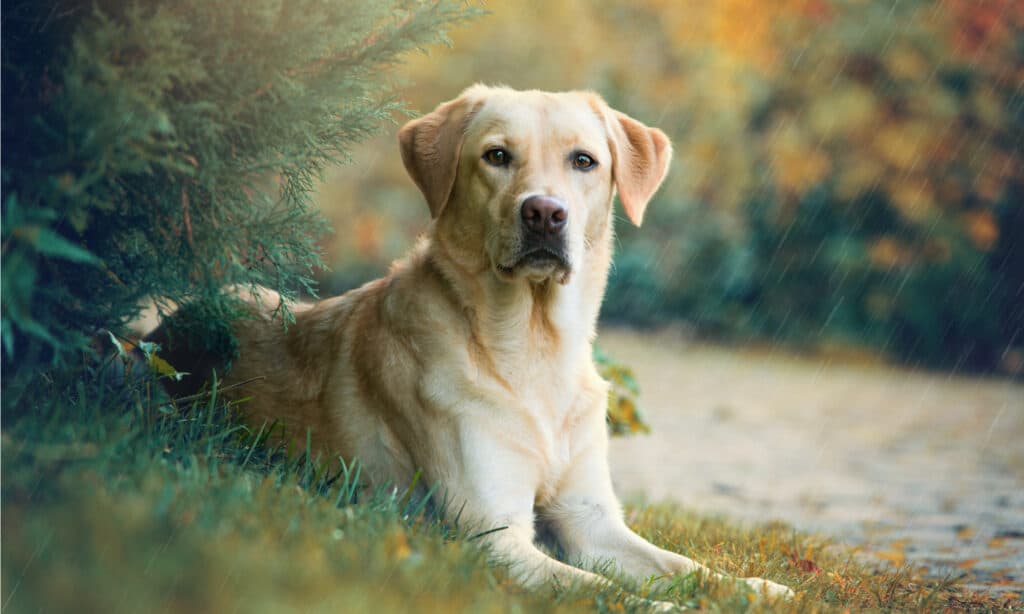
Brian Griffin, the dog from the popular TV show “Family Guy,” is a white Labrador Retriever.
©Dora Zett/Shutterstock.com
Labrador Retrievers in Other Cinema and Publishing
Labrador Retrievers are in numerous films and books. Often in significant roles, highlighting their endearing qualities such as loyalty, companionship, and bravery. These stories remind us of the profound impact that dogs can have on our lives and the valuable life lessons they teach us.
Marley & Me
“Marley & Me” is a heartwarming and humorous story that chronicles the life of a rambunctious Labrador Retriever named Marley and his owners, John and Jenny Grogan. The story follows the real-life experiences of author John Grogan, who wrote a memoir by the same name.
The film and book portray Marley as a lovable but mischievous dog who brings chaos and joy into the lives of the Grogan family. Marley’s antics included eating furniture, swallowing valuable items, and causing general mayhem, leading to countless humorous and endearing moments throughout the story.
Despite Marley’s misbehavior, he becomes an integral part of the family, teaching them important lessons about love, loyalty, and the true meaning of companionship. Marley’s unwavering devotion and ability to bring joy to even the most challenging times make him an unforgettable character.
“Marley & Me” explores the joys and challenges of pet ownership, capturing the profound bond that can develop between humans and their furry friends. It tugs at the heartstrings as it portrays the inevitable passage of time and the bittersweet moments that come with the aging and eventual loss of a beloved pet.
Old Yeller
“Old Yeller” is a classic children’s novel. Of which Fred Gipson wrote. Set in the Texas frontier in the 1860s, the story revolves around a brave and loyal Labrador Retriever and Mastiff mix named Old Yeller and his relationship with the Coates family.
In the book, the Coates family faces various challenges, including wild animals, a dangerous bull, and the harsh realities of frontier life. Old Yeller proves himself as a steadfast protector, demonstrating unwavering loyalty and courage.
The bond between the young protagonist, Travis Coates, and Old Yeller is at the heart of the story. Travis learns important lessons about responsibility, bravery, and the strength of the human-animal bond through his experiences with the faithful dog.
“Old Yeller” explores themes of friendship, loss, and the resilience of the human spirit. It captures the emotions and complexities of growing up and showcases animals’ impact on our lives.
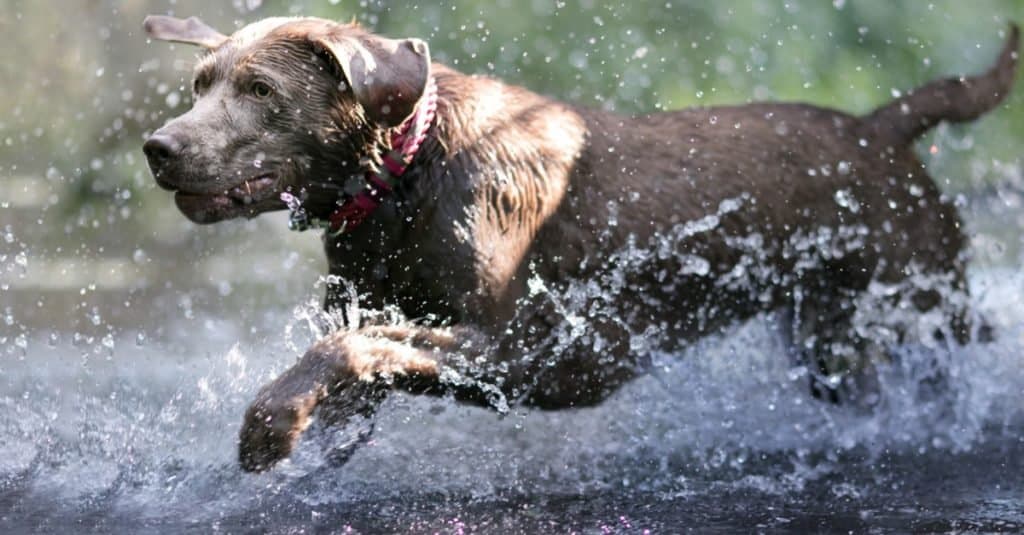
People purposefully bred Labrador Retrievers to be water dogs.
©Johanna Mehrke Fotografie/Shutterstock.com
Labrador Retriever Care Requirments
Are you thinking of adopting one of the most-loved dogs into your life? Labrador Retrievers, known for their friendly and energetic nature, require specific care to ensure their health and well-being. They are also quite popular as characters in books and on the big screen, including the dog Brian Griffin from Family Guy. From providing adequate exercise to offering mental stimulation and regular preventative veterinary care, there are several factors to consider when caring for this beloved breed.
Exercise
Labrador Retrievers are active and athletic dogs that thrive with regular exercise. Daily physical activity is crucial to keep them physically fit and mentally stimulated. Engage in activities such as brisk walks, runs, playing fetch, or swimming, as Labradors have a natural affinity for water. Aim for at least 30 to 60 minutes of exercise daily to help prevent obesity and promote overall health.
Mental Stimulation
In addition to physical exercise, mental stimulation is essential for Labrador Retrievers. These intelligent dogs require mental challenges to prevent boredom and to keep their minds sharp. Provide interactive toys, puzzle games, and obedience training sessions to engage their cognitive abilities. Incorporating scent work, agility training, and retrieving activities can also provide mental stimulation and fulfillment.
Nutritious Diet
A balanced and nutritious diet is vital for Labrador Retrievers to maintain a healthy weight and overall well-being. Choose high-quality dog food formulated for their specific needs, considering factors such as age, size, and activity level. Avoid overfeeding and monitor their food intake to prevent obesity, a common health concern for the breed. Regularly consult your veterinarian to determine the appropriate portion sizes and dietary requirements for your Labrador.
Grooming
Labradors have a short and dense double coat that requires regular grooming. Brushing their coat a few times a week helps to remove loose hair, prevent matting, and keep their skin and coat healthy. Labradors are moderate shedders, so regular brushing can help minimize shedding. Additionally, trim their nails regularly, clean their ears to prevent infections, and maintain good dental hygiene by brushing their teeth regularly.
Preventative Veterinary Care
Regular veterinary care is essential to ensure the health and longevity of your Labrador Retriever. Schedule routine check-ups with a trusted veterinarian for vaccinations, parasite control, and general wellness examinations. Labradors are prone to specific health issues, such as hip and elbow dysplasia, eye problems, and obesity. Regular veterinary visits allow for early detection of potential health concerns and timely interventions.
Socialization
Labrador Retrievers are naturally social dogs, and early socialization is crucial for their well-rounded development. Expose them to various environments, people, animals, and situations from a young age to help them become well-adjusted and confident adults. Positive experiences during socialization help prevent fearfulness and aggressive behavior. Engage them in puppy training classes and provide opportunities for controlled interactions with other dogs to encourage appropriate social behavior.
Dental Care
Labradors are susceptible to dental problems, including gum disease and tooth decay. Establish a regular dental care routine by brushing your teeth with a dog-specific toothbrush and toothpaste recommended by your veterinarian. Dental chews, toys, or treats that promote oral health can also be beneficial. Regular dental care helps maintain good oral hygiene, prevents dental issues, and supports overall health.
Swimming Safety
Labrador Retrievers have a renowned love for water and possess exceptional swimming abilities. However, it’s important to ensure their safety during water activities. Always supervise them when near bodies of water, and provide life jackets for added protection, especially during boating or in unfamiliar or potentially hazardous environments. Before allowing them to swim, check for any potential hazards, such as strong currents or toxic substances.
Temperature Considerations
Labradors have a dense double coat that provides insulation in various weather conditions. However, they can still be susceptible to extreme temperatures. Provide shade and fresh water during hot weather, and avoid strenuous exercise during peak heat hours to prevent heatstroke. Protect them with appropriate clothing or limit their exposure to extreme cold in colder weather. Monitor their well-being closely during temperature extremes and adjust their environment accordingly.
Love and Attention
Lastly, Labrador Retrievers thrive on love, attention, and positive reinforcement. They are highly social and thrive as part of a family unit. Spend quality time with your Labrador, provide affection, and create a strong bond through positive interactions. Engage in activities that strengthen your relationship, such as training sessions, playtime, and leisurely walks. Their loyalty and affectionate nature make them excellent companions, and your love and attention will contribute to their happiness and well-being.
You can ensure that your Labrador Retriever leads a healthy and fulfilling life by providing adequate exercise, mental stimulation, a nutritious diet, regular grooming, preventative veterinary care, and a loving environment.
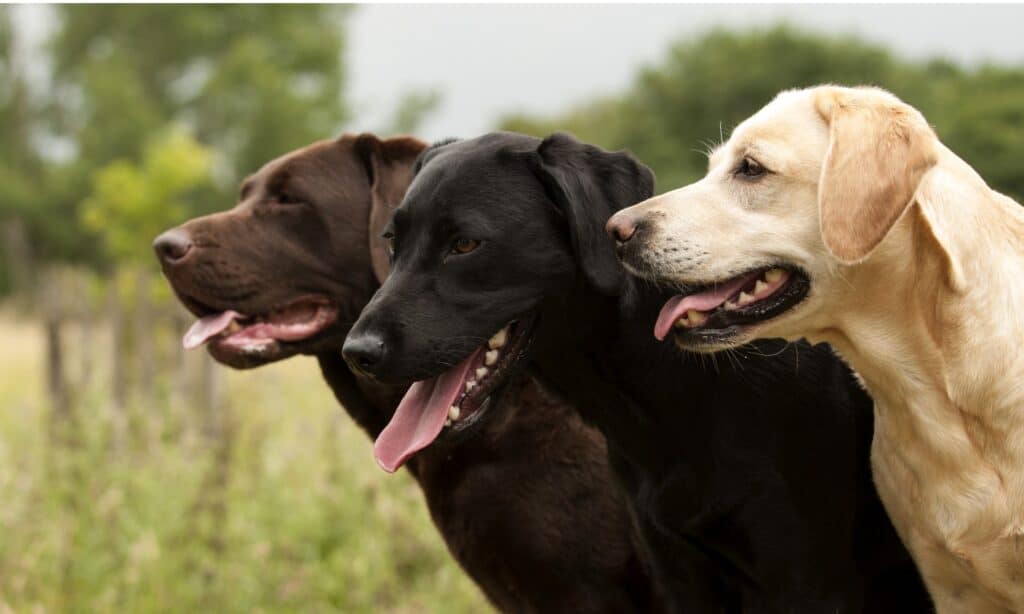
Labrador Retrievers are not only popular characters in cinema and publishing, but they also make wonderful family pets.
©iStock.com/lizcen
Conclusion
Labrador Retrievers have gained wide recognition and adoration, consistently ranking as one of the most popular dog breeds globally for many years. Their versatile nature and remarkable traits have made them beloved companions, working dogs, and stars of the big and small screens.
The dog Brian Griffin, the lovable character from Family Guy, is portrayed as a Labrador Retriever.
Creator Seth MacFarlane chose this breed due to the Labrador’s intelligence, loyalty, and friendly nature, making it a perfect fit for Brian’s role. From movies like “Marley & Me” to TV shows such as “Family Guy,” Labradors have captured people’s hearts worldwide. Their popularity and endearing qualities continue to make them cherished family pets and admired canine characters in popular culture.
Ready to discover the top 10 cutest dog breeds in the entire world?
How about the fastest dogs, the largest dogs and those that are -- quite frankly -- just the kindest dogs on the planet? Each day, AZ Animals sends out lists just like this to our thousands of email subscribers. And the best part? It's FREE. Join today by entering your email below.
Thank you for reading! Have some feedback for us? Contact the AZ Animals editorial team.

